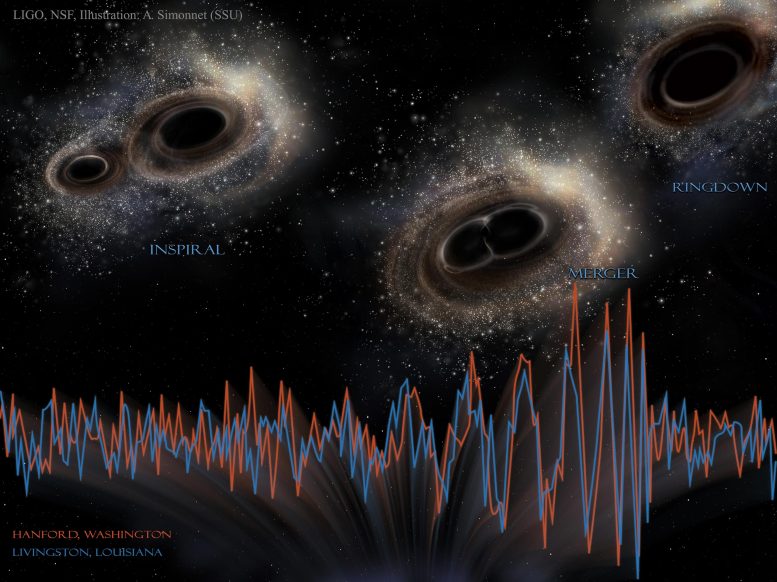
Einstein imagined gravitational waves over a hundred years ago, but it wasn’t until 2016 that technology finally caught up. Now, researchers are pushing the boundaries again – this time with the help of an AI named Urania.
Developed by Dr. Mario Krenn and his team, Urania has designed a series of novel gravitational wave detectors that not only match but often exceed the capabilities of existing human-made concepts. What’s most fascinating is that the AI didn’t just replicate known strategies – it invented brand new ones, some of which scientists don’t yet fully understand. These discoveries are now publicly available in a “Detector Zoo,” hinting at a bold new era where machines innovate and humans interpret.
Einstein’s Vision Meets Modern AI
Over a hundred years ago, Albert Einstein predicted the existence of gravitational waves – ripples in the fabric of space-time. But it wasn’t until 2016 that scientists were able to detect them directly, thanks to the highly complex detectors developed by the LIGO (Laser Interferometer Gravitational-Wave Observatory) team.
Now, Dr. Mario Krenn, who leads the Artificial Scientist Lab at the Max Planck Institute for the Science of Light (MPL), has teamed up with LIGO researchers to take detector design to the next level. Together, they developed an AI algorithm called Urania that creates innovative designs for interferometric gravitational wave detectors. Interferometry is a technique that measures tiny changes by analyzing the way waves interfere with each other when they overlap.

Designing these detectors is a complicated task that involves fine-tuning both the layout and many specific parameters. The team turned this into a continuous optimization problem and used machine learning methods to solve it. The result? A large set of new experimental designs – many of which outperform even the best concepts proposed for next-generation detectors. Some could improve sensitivity by more than tenfold, dramatically expanding the range of gravitational wave signals we’re able to detect.

Nonconformist and Creative: That’s What Urania Discovered
In the algorithm’s solutions, the researchers rediscovered numerous known techniques. Urania also proposed unorthodox designs which could reshape our understanding of detector technology.
“After roughly two years of developing and running our AI algorithms, we discovered dozens of new solutions that seem to be better than experimental blueprints by human scientists. We asked ourselves what humans overlooked in comparison to the machine,” says Krenn.
The researchers expanded their scientific approach to understand the AI-discovered tricks, ideas, and techniques. Many of them are still completely alien to them. They have compiled 50 top-performing designs in a public “Detector Zoo” and made them available to the scientific community for further research.
From Algorithm to Insight: Learning from Machines
The recently published work shows that AI can uncover novel detector designs and inspire human researchers to explore new experimental and theoretical ideas. More broadly, it suggests that AI could play a major role in designing future tools for exploring the universe, from the smallest to the largest scales.
“We are in an era where machines can discover new super-human solutions in science, and the task of humans is to understand what the machine has done. This will certainly become a very prominent part of the future of science,” says Krenn.
Reference: “Digital Discovery of Interferometric Gravitational Wave Detectors” by Mario Krenn, Yehonathan Drori and Rana X Adhikari, 11 April 2025, Physical Review X.
DOI: 10.1103/PhysRevX.15.021012
Never miss a breakthrough: Join the SciTechDaily newsletter.
2 Comments
Did A.I. create that illustration? Looks straight out of steampunk.
Yes, it was created with Midjourney v7, based on an image from Dall-E 3.